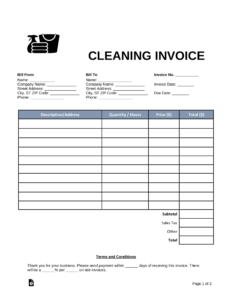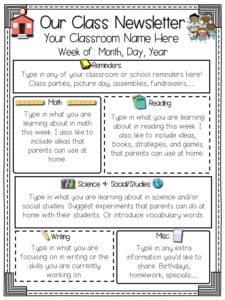When it comes to driving revenue and growing your business, having an effective sales process is paramount. A well-defined sales process not only streamlines your sales activities but also allows you to identify and capitalize on opportunities. In this article, we will dive deep into the world of sales process templates, exploring what they are, why they are important, and how you can create one that aligns with your business goals.
What is a Sales Process Template?
A sales process template is a step-by-step framework that outlines the key stages and activities involved in closing a sale. It serves as a roadmap for your sales team, providing guidance on how to navigate the sales cycle from prospecting to closing. By following a standardized process, your sales team can enhance their efficiency, improve customer experience, and ultimately increase sales conversion rates.
A sales process template typically includes the following stages:
- Prospecting: This is the initial stage where you identify potential customers who may have a need for your product or service. Prospecting can involve activities like cold calling, email outreach, or attending industry events.
- Qualification: Once you have identified potential prospects, the next step is to qualify them. This involves assessing their needs, budget, and fit with your offering. Qualification ensures that you focus your time and resources on leads that are most likely to convert.
- Needs Analysis: In this stage, you delve deeper into understanding the prospect’s pain points, challenges, and goals. This helps you tailor your solution to address their specific needs and position your product as the ideal solution.
- Proposal: After analyzing the prospect’s needs, you present a customized proposal that outlines how your product or service can solve their problems. This proposal should clearly communicate the value proposition and highlight the unique benefits your offering brings.
- Negotiation: Once the prospect has reviewed the proposal, negotiations may take place. This stage involves discussing terms, pricing, and any specific requirements the prospect may have. Effective negotiation skills are crucial to reaching a mutually beneficial agreement.
- Closing: The closing stage is when the prospect agrees to move forward with the purchase. This may involve signing a contract, making a payment, or any other action that signifies the completion of the sale.
- Follow-up: After closing the sale, it is essential to maintain a strong relationship with the customer. The follow-up stage involves ensuring customer satisfaction, addressing any concerns, and identifying opportunities for upselling or cross-selling.
Why is a Sales Process Template Important?
Implementing a well-structured sales process template offers numerous benefits for your business. Let’s explore some of the key reasons why having a sales process template is crucial:
1. Consistency and Replicability:
A sales process template provides your sales team with a clear roadmap to follow. This ensures consistency in how deals are handled and increases the likelihood of achieving desired outcomes. By having a replicable process, you can train new sales representatives more effectively and maintain consistent performance across your team.
2. Efficiency and Productivity:
A well-defined sales process eliminates guesswork and allows your sales team to focus on high-value activities. By breaking down the sales cycle into distinct stages, you can identify bottlenecks, optimize workflows, and automate repetitive tasks. This streamlines your sales operations, saving time and increasing overall productivity.
3. Improved Customer Experience:
A sales process template ensures that your sales team engages with customers in a consistent and professional manner. By understanding the customer’s needs at each stage, your team can provide relevant information, answer questions, and address concerns effectively. This builds trust and enhances the overall customer experience.
4. Better Forecasting and Decision Making:
With a well-structured sales process template, you can track and analyze key sales metrics at each stage. This allows you to forecast sales, identify trends, and make data-driven decisions. By understanding the conversion rates and average deal sizes at each stage, you can optimize your sales strategies and allocate resources more effectively.
5. Scalability and Growth:
As your business expands, having a sales process template becomes even more critical. It provides a framework that can be replicated across different markets, regions, or sales teams. This scalability ensures that your sales operations remain consistent and effective, enabling you to grow your business without compromising on quality.
Creating a Sales Process Template
Now that we understand the importance of a sales process template, let’s dive into the steps involved in creating one that aligns with your business goals:
1. Define Your Sales Objectives:
Start by clearly defining your sales objectives. What are you trying to achieve with your sales process? Are you focused on increasing revenue, acquiring new customers, or maximizing customer lifetime value? By having a clear understanding of your goals, you can tailor your sales process to support these objectives.
2. Identify Your Target Audience:
Next, identify your target audience or ideal customer profile. Who are the customers you want to attract? What industries do they belong to? What are their pain points and challenges? Understanding your target audience helps you tailor your sales process and messaging to resonate with their specific needs.
3. Map Out Your Sales Stages:
Once you have defined your objectives and target audience, map out the key stages involved in your sales process. Consider the typical steps your prospects go through from initial contact to closing a deal. This could include stages like prospecting, qualification, needs analysis, proposal, negotiation, closing, and follow-up.
4. Define Key Activities and Milestones:
Within each sales stage, identify the key activities and milestones that signify progress. For example, in the prospecting stage, activities could include identifying potential leads, conducting outreach, and scheduling meetings. Milestones could be securing a meeting or obtaining contact information.
5. Determine Sales Metrics and KPIs:
To measure the effectiveness of your sales process, determine the key metrics and key performance indicators (KPIs) you will track. This could include metrics like conversion rates, average deal size, sales cycle length, and win rate. By regularly monitoring these metrics, you can identify areas for improvement and optimize your sales process accordingly.
6. Document Your Sales Process:
Once you have defined your sales stages, activities, milestones, and metrics, document your sales process in a clear and concise manner. This could take the form of a visual flowchart or a written document. Make sure to include detailed instructions, best practices, and any necessary templates or resources to support your sales team.
7. Communicate and Train Your Sales Team:
Effective communication and training are essential to ensure your sales team understands and embraces the sales process template. Conduct training sessions, provide resources and materials, and encourage feedback from your team. Continuous reinforcement and coaching will help your team internalize the process and improve their sales effectiveness.
8. Test, Refine, and Iterate:
Implementing a sales process template is an iterative process. Monitor the performance of your sales team, gather feedback, and identify areas for improvement. Continuously refine and optimize your sales process based on real-time data and insights. By staying agile and adaptable, you can ensure that your sales process remains effective in a dynamic business environment.
Case Study: How XYZ Company Increased Sales Conversion by 30%
Let’s take a look at how XYZ Company, a software-as-a-service (SaaS) provider, used a well-defined sales process template to boost their sales conversion rates by 30%:
XYZ Company recognized that their sales team was spending a significant amount of time on leads that were not qualified or not a good fit for their product. They realized the need for a standardized sales process that would help them focus on high-value opportunities.
After conducting market research and analyzing their existing sales data, XYZ Company developed a sales process template with the following stages:
- Stage 1: Prospecting: Identify potential customers through targeted marketing campaigns and industry networking events.
- Stage 2: Qualification: Assess the prospect’s budget, needs, and fit with XYZ Company’s product.
- Stage 3: Demo and Needs Analysis: Conduct a personalized product demonstration and gather information about the prospect’s pain points and goals.
- Stage 4: Proposal: Present a customized proposal that highlights the benefits and value of XYZ Company’s product.
- Stage 5: Negotiation: Discuss pricing, terms, and address any specific requirements the prospect may have.
- Stage 6: Closing: Obtain a signed contract or purchase order from the prospect.
- Stage 7: Onboarding and Follow-up: Ensure a smooth onboarding process and maintain regular communication with the customer to address any concerns or upselling opportunities.
As a result of implementing the sales process template, XYZ Company experienced significant improvements in their sales performance. Here are some key outcomes:
- Increased Efficiency: By focusing on qualified leads and following a standardized process, the sales team became more efficient in their sales activities. They were able to prioritize their time and resources on deals with higher potential, resulting in a reduction in wasted efforts.
- Improved Conversion Rates: The clear stages and activities outlined in the sales process template ensured that the sales team was consistently moving prospects through the pipeline. This resulted in a 30% increase in sales conversion rates, as prospects were more effectively guided towards closing the deal.
- Better Customer Experience: The needs analysis stage allowed the sales team to gather valuable insights about the prospect’s pain points and goals. This enabled them to tailor their solution and provide a more personalized experience. As a result, customers felt understood and valued, leading to higher customer satisfaction and loyalty.
- Enhanced Forecasting: By tracking key metrics and KPIs at each stage of the sales process, XYZ Company gained better visibility into their sales pipeline. This allowed them to forecast future sales with greater accuracy and make data-driven decisions to optimize their resources.
This case study highlights the tangible benefits of implementing a sales process template. By creating a standardized and replicable process, XYZ Company was able to improve both the efficiency and effectiveness of their sales operations, resulting in significant business growth.
Key Elements of a Successful Sales Process Template
Now that we have explored the importance of a sales process template and examined a case study, let’s delve into the key elements that make a sales process template successful:
1. Clear and Defined Stages:
A successful sales process template consists of clear and well-defined stages that guide the prospect through the buying journey. Each stage should have specific objectives and activities that support the overall sales goal. This clarity helps both the sales team and the prospect understand where they are in the process.
2. Customer-Centric Approach:
A successful sales process template puts the customer at the center. It focuses on understanding the customer’s needs, pain points, and goals at each stage, allowing the sales team to provide tailored solutions and build strong relationships. By empathizing with the customer, you can create a positive buying experience and increase the chances of closing the deal.
3. Flexibility and Adaptability:
A successful sales process template should provide a framework that allows for flexibility and adaptability. Not all prospects will follow the same path, and circumstances may vary. It is important to have the flexibility to customize the process to fit the unique needs of each prospect while still maintaining the core structure.
4. Collaboration and Communication:
A successful sales process template encourages collaboration and communication between the sales team and other departments, such as marketing and customer success. This alignment ensures a seamless transition from one stage to another and provides a holistic view of the customer journey. Effective communication also enables the sharing of valuable insights and feedback, leading to continuous improvement.
5. Continuous Improvement:
A successful sales process template is never static. It should be continuously reviewed, refined, and improved based on real-time data and feedback. Regularly assess the effectiveness of each stage, track key metrics, and gather insights from the sales team and customers. This iterative approach allows you to optimize your sales process and stay ahead of market trends.
Conclusion
Implementing a well-designed sales process template is crucial for any business seeking to optimize their sales strategy. A sales process template provides a roadmap for your sales team, ensuring consistency, efficiency, and improved customer experience. By defining clear stages, activities, and metrics, you can track performance, make data-driven decisions, and drive business growth.
Remember, creating a successful sales process template requires a customer-centric approach, continuous improvement, and collaboration between different departments. By tailoring the template to your specific business goals and target audience, you can maximize the effectiveness of your sales efforts and achieve sustainable success.
Frequently Asked Questions (FAQs)
1. What is the role of automation in a sales process template?
Automation plays a significant role in optimizing a sales process template. It helps streamline repetitive tasks, such as sending follow-up emails or updating CRM records, allowing your sales team to focus on high-value activities. Automation can also provide valuable data and insights that help identify bottlenecks and improve efficiency.
2. How can a sales process template improve sales forecasting?
A sales process template provides a structured framework that allows you to track key metrics and KPIs at each stage of the sales process. By analyzing these metrics, you can gain insights into conversion rates, average deal size, and sales cycle length. This data enables you to forecast future sales with greater accuracy and make informed decisions to drive revenue growth.
3. Should a sales process template be standardized for all industries?
While a sales process template provides a framework, it should be customized to fit the unique needs of your target audience and industry. Each industry may have different buying behaviors, pain points, and decision-making processes. Therefore, it is essential to tailor your sales process template to align with the specific characteristics of your industry.
4. How frequently should a sales process template be reviewed and updated?
A sales process template should be reviewed and updated regularly to ensure its effectiveness. As market conditions and customer preferences change, your sales process needs to adapt accordingly. Additionally, gathering feedback from your sales team and customers can provide valuable insights for refinement and improvement.
5. Can a sales process template be applied to different types of sales, such as B2B and B2C?
Yes, a sales process template can be applied to different types of sales, including B2B and B2C. While the specific activities and nuances may differ, the underlying principles of guiding prospects through the buying journey and focusing on customer needs remain the same. Adapt the sales process template to fit the characteristics and dynamics of your target market and sales model.
Summary
Developing and implementing a sales process template is crucial for businesses aiming to optimize their sales strategy. A well-defined template ensures consistency, efficiency, and improved customer experience throughout the sales cycle. Key elements of a successful sales process template include clear stages, a customer-centric approach, flexibility, collaboration, and continuous improvement. By tailoring the template to your specific business goals and target audience, you can drive revenue growth and achieve sustainable success.





